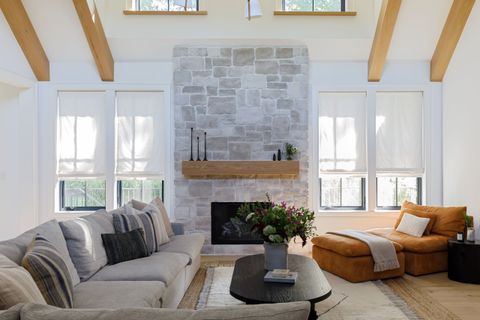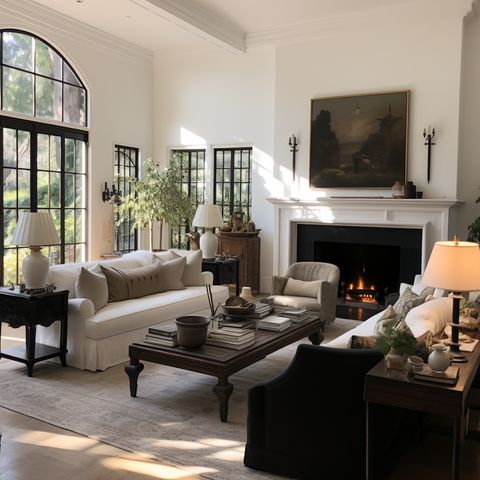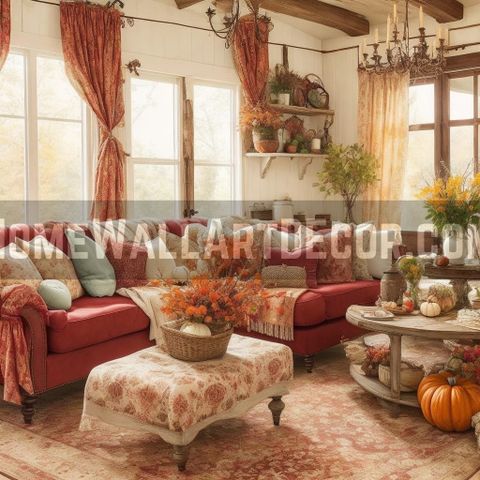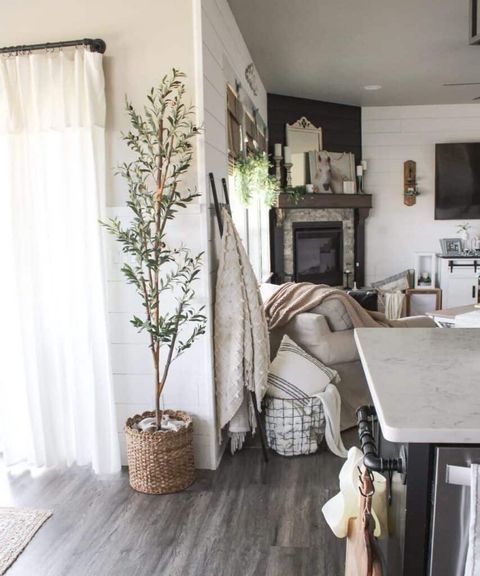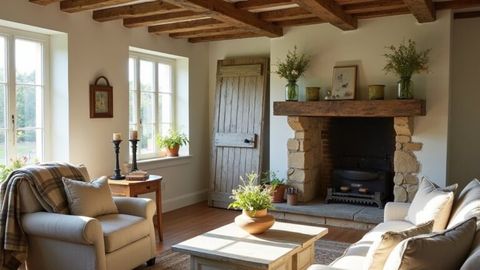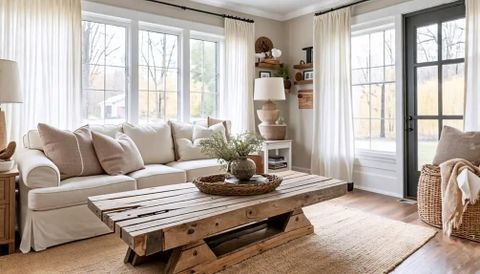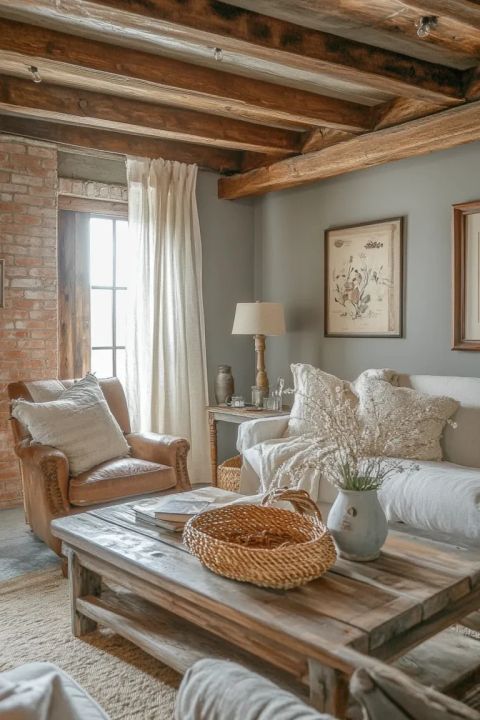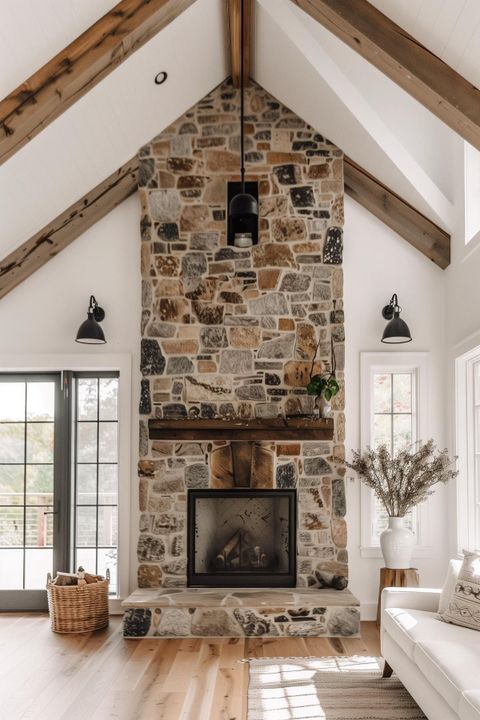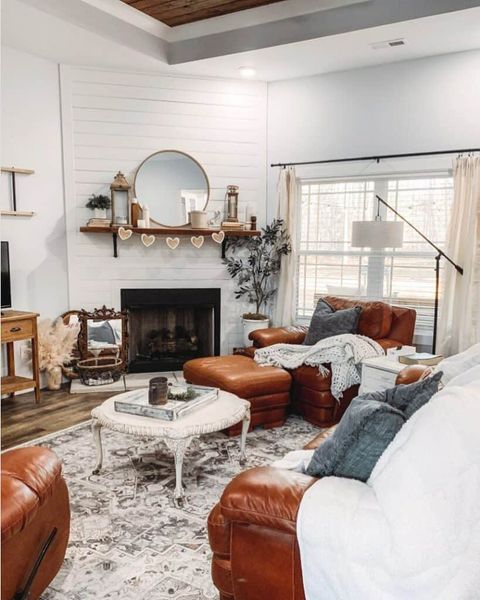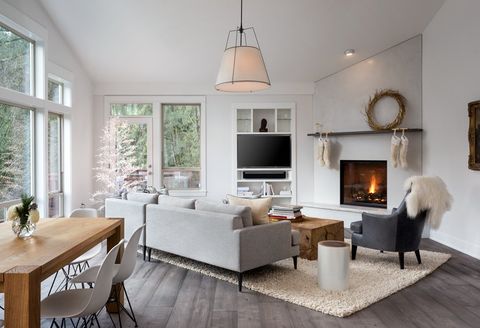There’s something truly captivating about the farmhouse aesthetic, isn’t there? It’s more than just a style; it’s a feeling. It’s the comforting scent of freshly baked bread, the gentle hum of conversation, and the soft glow of lamplight on well-loved wood. As someone who has spent decades immersed in the art of creating harmonious living spaces, I can tell you that the allure of farmhouse design lies in its inherent ability to foster a sense of warmth, authenticity, and enduring comfort. It’s about building a home that feels lived-in and loved, a sanctuary from the often-hectic world outside.
When we talk about ‘farmhouse inspired’ principles, we’re not just talking about shiplap and barn doors. While those elements certainly play a part, the true essence goes much deeper. It’s about a philosophy of living – one that values simplicity, practicality, and connection. Think about the original farmhouses; they were built to be functional, sturdy, and to withstand the test of time. They were gathering places, centers of family life, and reflections of the natural world around them. Our goal in bringing these principles into our modern homes is to capture that same spirit, blending the rustic charm of yesteryear with the conveniences and comforts we expect today. It’s a delicate dance, but one that, when executed thoughtfully, can transform a mere house into a truly harmonious abode.
The Foundation: Embracing Natural Materials and Textures
At the very core of farmhouse design is a deep appreciation for natural materials. This isn’t just about what looks good; it’s about what feels right and what lasts. Think about the sturdy oak of a farmhouse table, worn smooth by countless family meals, or the rough-hewn beams that once supported a barn roof.
- Wood, Wood, Everywhere! From wide-plank flooring to exposed ceiling beams, wood is paramount. Don’t be afraid to mix different types and finishes. A distressed pine coffee table can beautifully complement a smooth, dark walnut dresser. The key is to let the natural charcter of the wood shine through. We’re not aiming for perfection here; knots and imperfections add to the story of the piece.
- Stone and Brick: Earth’s Embrace. Whether it’s a grand stone fireplace or a subtle brick accent wall in the kitchen, these elements ground the space and add a sense of timelessness. They bring the outdoors in, creating a connection to the natural landscape that is so integral to the farmhouse ethos.
- Textiles with Soul. Linen, cotton, wool – these are your friends. Think about chunky knit throws draped over a sofa, soft linen curtains billowing in a gentle breeze, or a hand-woven rug underfoot. These textiles add warmth, texture, and a sense of inviting comfort. They also help to soften the harder edges of wood and stone, creating a balanced and welcoming environment. It’s about creating layers of interest and tactile pleasure, making every surface feel inviting to touch.
Color Palettes: A Serene and Soothing Canvas
The farmhouse color palette is typically inspired by nature, reflecting the calm and restorative qualities of the countryside. It’s rarely about bold, shocking hues, but rather a sophisticated interplay of muted tones that create a sense of tranquility and spaciousness.
- Whites and Creams: The Blank Slate. Crisp whites, creamy ivories, and soft off-whites are the backbone of many farmhouse interiors. They reflect light, making spaces feel larger and more airy, and provide a perfect backdrop for other natural elements to stand out. They’re also incredibly versatile, allowing you to easily change out accent colors with the seasons or as your tastes evolve.
- Soft Grays and Blues: Echoes of the Sky and Sea. Muted grays, ranging from light dove to charcoal, add depth and sophistication without overpowering the space. Similarly, soft blues, reminiscent of a clear sky or a tranquil lake, bring a sense of calm and serenity. These colors pair beautifully with natural wood tones and white accents.
- Earthy Greens and Neutrals: Grounding the Space. Think sage greens, olive tones, and even subtle browns. These colors connect the indoors to the natural world outside, reinforcing the organic feel of the farmhouse style. They can be introduced through plants, throw pillows, or even a subtle wall color in a smaller room. The idea is to create a cohesive and calming visual experience, one that encourages relaxation and peace.
Functionality and Practicality: Design with Purpose
One of the most appealing aspects of farmhouse living is its emphasis on practicality. Every item, every piece of furniture, often serves a purpose. This isn’t about rigid minimalism, but rather about thoughtful selection and efficient use of space.
- Furniture that Works Hard (and Looks Good Doing It). Large, comfortable sofas are a must, inviting long conversations and cozy evenings. Dining tables are often expansive, designed to accommodate family gatherings and shared meals. Look for pieces with clean lines and sturdy construction. Consider benches for seating at the dining table, or a large ottoman that doubles as a coffee table and extra seating.
- Smart Storage Solutions. In a farmhouse, everything has its place. Open shelving in the kitchen allows for easy access to dishes and often-used items, while also displaying beautiful pottery or glassware. Baskets, antique crates, and vintage armoires provide charming and practical storage throughout the home. Think about mudrooms or entryways with built-in cubbies and hooks – perfect for keeping clutter at bay.
- Durability Over Delicacy. Farmhouse homes are meant to be lived in. Choose materials and finishes that can withstand daily wear and tear. Slipcovered sofas are a dream for families and pets, as they can be easily cleaned. Durable finishes on floors and countertops mean less worry and more enjoyment of your space. This approach fosters a sense of ease and relaxation, knowing your home can handle whatever life throws at it.
Curated Collections and Sentimental Touches
A truly harmonious farmhouse home tells a story. It’s not about filling a space with brand-new, mass-produced items, but rather about carefully selecting pieces that have meaning, history, or simply a charming character. This is where your personality truly shines through.
- Antiques and Vintage Finds. These pieces are the soul of a farmhouse-inspired home. A chippy painted dresser, an old wooden crate, or a collection of antique glass bottles can add immense character and a sense of history. Don’t be afraid to mix and match; the juxtaposition of old and new creates a dynamic and interesting space. Flea markets, antique shops, and even online marketplaces are treasure troves for these unique finds.
- Handmade and Artisanal Goods. Support local artisans and bring in items that show the touch of a human hand. This could be a hand-thrown ceramic mug, a beautifully woven textile, or a unique piece of folk art. These items add warmth and a sense of authenticity that mass-produced goods simply cannot replicate.
- Personal Mementos and Family Heirlooms. Displaying family photographs, inherited pieces of furniture, or travel souvenirs makes a house feel like a home. These items are rich with personal meaning and contribute to the narrative of your life. They make your space truly unique and deeply personal. Remember, it’s about building a home that reflects your journey and your values, not just a picture from a magazine.
Bringing the Outdoors In: A Seamless Connection
The original farmhouses were deeply connected to their natural surroundings. This connection is a vital principle in creating a harmonious farmhouse home today. It’s about blurring the lines between inside and out, inviting nature’s beauty to become part of your interior.
- Abundant Natural Light. Large windows are highly prized in farmhouse design, allowing sunlight to flood the interior. Keep window treatments simple and uncluttered, favoring light, airy fabrics that don’t block the view or the light. The goal is to maximize the amount of natural illumination, which instantly lifts the mood and makes any space feel more inviting.
- Greenery Galore. Houseplants are an absolute must. From sprawling fig trees to delicate ferns, plants bring life, color, and a sense of freshness to any room. They also naturally filter the air and contribute to a healthier indoor environment. Grouping plants together can create a mini-oasis, adding to the serene atmosphere.
- Natural Elements as Decor. Don’t underestimate the power of simple natural elements. A vase filled with wildflowers from your garden, a bowl of fresh fruit on the counter, or a collection of smooth river stones can add a lovely organic touch. These small details reinforce the connection to nature and add to the overall feeling of calm and authenticity. It’s about appreciating the simple beauty of the world around us and incorporating it into our daily lives.
The Art of Imperfection: Wabi-Sabi in Farmhouse Design
Perhaps one of the most liberating aspects of farmhouse-inspired design is its embrace of imperfection. This aligns beautifully with the Japanese aesthetic of ‘Wabi-Sabi,’ which finds beauty in transience and imperfection. A farmhouse home isn’t meant to be pristine or sterile; it’s meant to be lived in, loved, and to show the gentle wear and tear of time.
- Embrace the Patina. That slightly chipped paint on a vintage cabinet, the faded spot on an antique rug, the subtle scratches on a wooden table – these are not flaws to be hidden. Rather, they are marks of character, telling a story of use and history. They add depth and soul to a space, preventing it from feeling too ‘new’ or uninviting.
- Mix and Match, Don’t Matchy-Matchy. Forget about perfectly coordinated furniture sets. The beauty of farmhouse style lies in its eclectic nature. Combine different textures, finishes, and even periods. A modern sofa can look fantastic alongside an antique chest. This creates a more interesting and personal space, one that feels evolved over time rather than designed all at once.
- It’s Okay to Be a Bit Messy (Sometimes!). While organization is key for functionality, a farmhouse home isn’t about rigid perfection. A stack of books on a coffee table, a blanket casually draped over a chair, or a few toys on the floor (if you have kids!) contribute to the lived-in, comfortable atmosphere. It’s about creating a space that feels relaxed and genuinely welcoming, where you and your loved ones can truly unwind and be yourselves. This relaxed approach takes the pressure off, allowing you to simply enjoy your home.
Crafting a harmonious home with farmhouse-inspired principles is an ongoing journey, not a destination. It’s about intentionally creating a space that nurtures your soul, reflects your values, and provides a true sanctuary for you and your family. By focusing on natural materials, a soothing color palette, practical functionality, curated collections, and a deep connection to nature, you can transform your living space into a place that feels authentically yours – a place where comfort, beauty, and a sense of enduring peace reside. Remember, the true essence of farmhouse living isn’t about following a strict set of rules, but about embracing a philosophy of warmth, simplicity, and genuine connection. So, take a deep breath, look around your home, and start infusing it with the timeless charm and comforting spirit of the farmhouse. You might be surprised at just how much peace and joy it brings.

